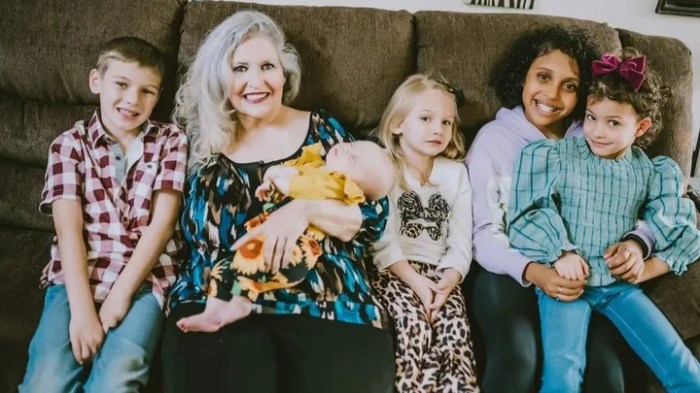
Preparing for funeral arrangements is a complex process, often undertaken during an emotionally challenging time. This guide offers practical steps and resources to navigate the various aspects of planning a funeral service, from the initial emotional response to the final stages of remembrance and honoring the deceased. We’ll cover everything from legal and administrative tasks to creating a meaningful tribute that celebrates the life lived.
Understanding the emotional and practical considerations involved is crucial. This involves addressing immediate needs like notifying loved ones and authorities, managing legal matters, and beginning the process of settling the deceased’s estate. Planning the funeral service itself requires careful consideration of personal preferences, budget, and available resources. This includes selecting a funeral home, choosing between burial or cremation, and designing a service that reflects the life and personality of the deceased.
Emotional and Practical Considerations
The death of a loved one is a profoundly difficult experience, triggering a complex interplay of emotions and demanding immediate practical action. Navigating this period requires both emotional resilience and efficient organization. Understanding the common emotional responses and the necessary practical steps can ease the burden during this challenging time.
Initial Emotional Stages and Coping Mechanisms
Grief is a deeply personal journey, and there is no single “right” way to feel. Common initial reactions include shock and disbelief, followed by intense sadness, anger, guilt, and perhaps even bargaining or acceptance. These stages aren’t linear; individuals may experience them in different orders and intensities. Coping mechanisms vary greatly depending on individual personality and support systems.
However, some helpful strategies include seeking support from family and friends, allowing oneself to grieve without judgment, engaging in self-care activities like exercise or spending time in nature, and considering professional grief counseling if needed. Journaling can also be a powerful tool for processing emotions. Remember that grief is a process, and it takes time to heal.
Immediate Practical Steps After a Death
Following a death, several immediate actions are crucial. First, contact the deceased’s physician to obtain a death certificate. Next, notify relevant authorities, such as the police (if the death was unexpected or suspicious), and the funeral home of your choice. Arrange for the transportation of the deceased to the funeral home, if necessary. Secure the deceased’s home and personal belongings to prevent theft or damage.
Finally, begin gathering important documents such as birth certificates, marriage certificates, wills, insurance policies, and bank statements. These will be necessary for subsequent legal and administrative tasks.
Communicating the News of the Death
Sharing the news of a death is a sensitive task. Consider who should be notified first – close family members and those closest to the deceased. Choose a method of communication that is appropriate for the relationship and the circumstances – a phone call is often best for immediate family, while email or social media may be suitable for broader announcements.
Be prepared for a range of emotional responses from those you inform. Offer support and understanding, and let people know how they can best support you during this time. Consider preparing a brief, clear announcement to avoid unnecessary repetition.
Managing Legal and Administrative Tasks After a Death
Managing the legal and administrative tasks following a death can be complex. A step-by-step approach is often helpful.
- Obtain multiple copies of the death certificate. These are required for various purposes, including closing bank accounts, transferring property, and obtaining life insurance benefits.
- Notify relevant institutions, including banks, credit card companies, and government agencies, of the death. This will help prevent further charges or unwanted mail.
- Locate and review the deceased’s will (if one exists). This document Artikels the distribution of assets and designates an executor.
- If there is no will, the process of probate will determine how the assets are distributed, according to the laws of the relevant jurisdiction.
- File the necessary tax returns. Depending on the circumstances, estate tax returns may be required.
- Settle outstanding debts and bills. This includes credit card payments, mortgages, and other financial obligations.
- If the deceased owned a business, notify relevant authorities and partners of the death.
It is advisable to seek legal and financial advice from professionals to navigate these complex procedures effectively. They can provide guidance on handling probate, estate taxes, and other legal matters.
Planning the Funeral Service
Planning a funeral service involves numerous decisions, balancing personal preferences with logistical considerations and budgetary constraints. Understanding the available options and the associated costs is crucial for making informed choices that honor the deceased while respecting the family’s resources.
Types of Funeral Services and Associated Costs
Funeral services vary widely in style, complexity, and cost. Traditional funeral services, often involving a viewing, funeral ceremony, and burial, tend to be more expensive. These costs can range from several thousand to tens of thousands of dollars, depending on the chosen casket, embalming, viewing arrangements, and the location of the service. Memorial services, which typically occur after cremation or burial, are generally less expensive.
They often focus on celebrating the life of the deceased and may be held in a church, funeral home, or other suitable location. Direct cremation, the simplest option, involves no viewing or ceremony, resulting in the lowest cost. Costs associated with direct cremation typically include the cremation fee and the cost of an urn. Other options include graveside services, which are simpler ceremonies held at the gravesite without a prior viewing or service at a funeral home.
The cost of each service varies significantly depending on the provider, location, and selected options.
Traditional Burial and Cremation: A Comparison
Traditional burial involves the interment of the deceased’s body in a casket, usually in a cemetery plot. This often includes embalming, a viewing, a funeral service, and the purchase of a casket and burial plot. Cremation, on the other hand, involves the reduction of the body to ashes through incineration. Cremated remains can then be kept in an urn, scattered, or placed in a niche or mausoleum.
The choice between burial and cremation is deeply personal, often reflecting cultural, religious, and environmental considerations. Burial typically entails higher upfront costs, while cremation may have lower initial costs but potentially higher costs associated with memorialization options later on.
Selecting a Funeral Home and Working with a Funeral Director
Choosing a funeral home requires careful consideration. It’s advisable to contact several funeral homes to compare services and pricing. Reputable funeral homes will provide detailed price lists and answer questions openly. A good funeral director acts as a guide, helping families navigate the emotional and logistical aspects of funeral arrangements. They assist with tasks such as obtaining death certificates, arranging transportation, and coordinating the service details.
Effective communication with the funeral director is crucial to ensure that the service reflects the family’s wishes and the deceased’s personality. Transparency in pricing and services is essential when selecting a funeral home.
Sample Funeral Program
A well-organized funeral program serves as a keepsake for attendees and provides a structured flow for the service. A typical program might include:
- Order of Service
- Obituary or biographical sketch of the deceased
- Readings (e.g., poems, scripture verses)
- Musical selections
- Eulogy or tributes
- Concluding remarks
- Acknowledgement of attendees
Potential Readings, Music, and Eulogies
Selecting appropriate readings, music, and eulogies is key to personalizing the service. Readings can range from religious texts to secular poems or excerpts from favorite books. Music can reflect the deceased’s tastes, from classical pieces to contemporary songs. Eulogies, delivered by loved ones, provide personal reflections on the deceased’s life and legacy. Examples of readings might include excerpts from “Desiderata” by Max Ehrmann, poetry by Walt Whitman, or verses from the Bible or Quran.
Musical selections could include hymns, classical pieces by Bach or Mozart, or songs by the deceased’s favorite artists. Eulogies should be heartfelt, authentic, and focus on celebrating the positive aspects of the deceased’s life.
Dealing with Finances and Legalities: Preparing For Funeral Arrangements

The death of a loved one brings immense emotional challenges, but it also necessitates navigating a complex web of financial and legal matters. Addressing these issues promptly and efficiently can ease the burden on the bereaved and ensure the deceased’s affairs are handled with respect and accuracy. This section Artikels the key steps involved in this process.
Obtaining and Using a Death Certificate
A death certificate is a crucial legal document, formally recording the details surrounding a person’s death. It’s issued by the relevant authorities, usually the local registrar of vital records, after the death has been reported and verified. The process typically involves providing the necessary documentation, such as the medical certificate of cause of death. The death certificate is essential for various purposes, including closing bank accounts, claiming life insurance benefits, settling the estate, and obtaining probate.
Multiple copies may be needed for different purposes, so it’s advisable to request several at the time of application.
Settling the Deceased’s Estate
Settling an estate involves identifying and managing all the deceased’s assets and liabilities. This includes gathering all relevant financial documents such as bank statements, investment records, property deeds, and loan agreements. Debts must be paid from the estate’s assets according to the order of priority Artikeld in the relevant jurisdiction’s laws. Assets, including real estate, vehicles, and personal possessions, are then inventoried and valued.
Depending on the complexity of the estate, professional assistance from an executor, administrator, or estate lawyer may be necessary to ensure all legal requirements are met and the process is handled correctly. For example, a complex estate with multiple properties and beneficiaries might require a lawyer’s expertise to manage the probate process and ensure fair distribution.
Life Insurance Claims and Beneficiary Designations
Life insurance policies provide financial support to beneficiaries after the death of the insured. To claim benefits, the beneficiary needs to provide the insurance company with a copy of the death certificate and the policy documents. The claim process varies depending on the insurer, but generally involves completing forms and providing supporting documentation. It’s crucial to review the policy carefully to understand the claim process and the designated beneficiaries.
Naming beneficiaries directly on the policy avoids the complexities of probate, ensuring a smoother and quicker payout. For example, a policy naming a spouse as the primary beneficiary simplifies the process considerably compared to a situation where the beneficiary is unclear or needs to be determined through probate.
Handling Wills and Trusts
A will is a legal document outlining how a person wishes to distribute their assets after their death. If a will exists, the executor named in the document is responsible for carrying out the instructions Artikeld within. If no will exists, the distribution of assets is governed by the laws of intestacy in the relevant jurisdiction. Trusts, on the other hand, are legal arrangements where assets are held by a trustee for the benefit of beneficiaries.
Trusts can offer various advantages, including asset protection and tax planning. Reviewing and understanding the terms of a will or trust is essential for executing the deceased’s wishes accurately. For instance, a will might specify particular charitable donations, while a trust might provide for the long-term financial care of minor children.
Tax Implications Related to Death and Inheritance
Death and inheritance often have tax implications. Estate taxes, inheritance taxes, and capital gains taxes may apply depending on the value of the estate and the laws of the relevant jurisdiction. Professional tax advice is often recommended to understand and navigate these complexities. Accurate record-keeping and proper planning before death can help minimize the tax burden on the beneficiaries.
For example, certain types of assets might be exempt from estate taxes, while others may be subject to capital gains tax upon sale. Careful estate planning can help to mitigate these potential liabilities.
Remembering and Honoring the Deceased

The death of a loved one leaves an irreplaceable void, but the memories and impact they leave behind can endure. Honoring their life and legacy is a crucial part of the grieving process, providing comfort and a sense of continuity for those left behind. Creating meaningful tributes allows us to celebrate their unique contributions and keep their spirit alive in our hearts and minds.
Creating Lasting Tributes
A lasting tribute can take many forms, each reflecting the personality and passions of the deceased. A memorial website offers a digital space to share photos, videos, stories, and condolences. It acts as a centralized location for loved ones to connect and remember the deceased, transcending geographical boundaries. Alternatively, a charitable donation in their name to a cause they championed redirects grief into positive action, furthering a purpose they held dear.
This act of service continues their legacy and provides solace to the bereaved. For instance, donating to a cancer research foundation in memory of someone lost to the disease carries a powerful symbolic weight.
Memorial Services and Gatherings
Memorial services or gatherings are opportunities to celebrate the life of the deceased and provide a shared space for mourning and remembrance. These events can range from intimate family gatherings to larger community celebrations. Consider incorporating elements that reflect the deceased’s life, such as favorite music, readings, or shared stories. A slideshow of photos set to their favorite music can create a poignant and moving tribute.
Alternatively, a gathering focused on sharing personal anecdotes and memories could provide a powerful platform for collective healing and remembrance. The focus should be on celebrating their life, highlighting their positive impact, and creating a space for shared grief and support.
Preserving Memories and Legacy, Preparing for funeral arrangements
Preserving memories and legacy for future generations ensures the deceased’s impact extends beyond their lifetime. This can involve creating a family history book filled with photos, stories, and important documents. Alternatively, recording oral histories – interviews with family and friends sharing their memories – provides valuable insight into the deceased’s life and character. These tangible legacies allow future generations to connect with their ancestor and understand their contributions to the family and community.
The compilation of these memories could also form the basis for a self-published biography or a family newsletter.
Creating Personalized Keepsakes
A personalized keepsake provides a tangible connection to the deceased, offering comfort and a way to keep their memory close. This could be a custom-made piece of jewelry containing a lock of hair or ashes, a framed photograph with a handwritten inscription, or a scrapbook filled with cherished memories. A beautifully crafted wooden box containing personal letters or mementos can create a lasting and cherished keepsake.
The choice should reflect the deceased’s personality and the relationship you shared. The act of creating the keepsake itself can be a therapeutic experience, allowing for reflection and the processing of grief.
Supporting Grieving Family Members and Friends
Supporting those grieving the loss of a loved one is crucial during this difficult time. Practical support, such as meal preparation, childcare assistance, or errands, can ease the burden on grieving family members. Emotional support involves actively listening, offering words of comfort, and validating their feelings. Avoid clichés and instead focus on offering genuine empathy and understanding.
Regular check-ins, a simple phone call, or even a thoughtful card can make a significant difference. Simply being present and acknowledging their grief can be a powerful act of support. Remember that grief manifests differently, and respecting individual needs and preferences is paramount.
Death and Dying
Understanding the process of death and dying is crucial for both individuals and their families. This knowledge allows for better preparation, informed decision-making, and a more peaceful transition. It also facilitates open communication and supports emotional well-being during a challenging time.
The Physiological Process of Dying
The physiological process of dying is complex and varies depending on the underlying cause of death. However, some common physiological changes include a decline in organ function, decreased blood pressure, changes in breathing patterns (such as Cheyne-Stokes respiration), and altered levels of consciousness. As the body shuts down, vital functions gradually cease. There are no universally defined stages, but the experience is often characterized by periods of lucidity interspersed with periods of confusion or unconsciousness.
The final moments are typically marked by a cessation of breathing and heartbeat.
Approaches to End-of-Life Care
End-of-life care focuses on providing comfort and support to individuals facing a life-limiting illness. Two prominent approaches are hospice and palliative care. Hospice care is typically provided during the final stages of a terminal illness, focusing on pain management and quality of life, rather than curative treatment. Palliative care, on the other hand, can be provided at any stage of a serious illness, concurrently with curative treatment, to address symptoms and improve the patient’s overall well-being.
Both aim to enhance the patient’s quality of life and provide support for their family.
Advance Care Planning
Advance care planning involves making decisions about future medical care in the event that an individual becomes unable to communicate their wishes. Creating a living will allows individuals to express their preferences regarding life-sustaining treatment, such as mechanical ventilation or artificial nutrition and hydration. Appointing a healthcare proxy (also known as a durable power of attorney for healthcare) designates a trusted individual to make healthcare decisions on the person’s behalf if they are incapacitated.
These documents ensure that an individual’s wishes are respected and reduces the burden on family members during a difficult time.
Resources for Individuals and Families
Numerous resources are available to individuals and families facing death and dying. Hospice organizations provide comprehensive support, including medical care, emotional counseling, and spiritual guidance. Palliative care programs offer similar services, often integrated into hospitals or other healthcare settings. Grief support groups and bereavement counseling can help individuals cope with the emotional challenges of loss. Online resources and helplines provide information and support, offering a valuable lifeline during a difficult period.
Many religious organizations also offer spiritual guidance and support.
Having Difficult Conversations
Initiating conversations about death and dying can be challenging, but open communication is essential. Creating a safe and supportive environment is paramount. It’s helpful to start by acknowledging the sensitive nature of the topic and validating the feelings of everyone involved. Using clear and simple language, focusing on the individual’s wishes and concerns, and actively listening to their responses are crucial.
It is beneficial to offer reassurance and support, acknowledging that these are difficult topics to discuss but essential for future planning and peace of mind. Consider starting with small steps, such as discussing general end-of-life preferences, and gradually addressing more specific details.
Comparison of End-of-Life Care Options
The choice between different end-of-life care options depends on individual circumstances and preferences. The following table provides a comparison of hospice and palliative care:
| Feature | Hospice Care | Palliative Care | At-Home Care |
|---|---|---|---|
| Focus | Comfort and quality of life in the final stages of a terminal illness | Symptom management and quality of life at any stage of a serious illness | Comfort and support in the familiar environment of one’s home |
| Setting | Home, hospice facility, hospital | Hospital, outpatient clinic, nursing home, home | Home |
| Treatment | Focuses on pain and symptom management; curative treatment is generally discontinued | Can be provided alongside curative treatment | Focuses on pain and symptom management, often coordinated with hospice or palliative care teams. |
| Eligibility | Requires a prognosis of six months or less to live | No specific time limit; available to anyone with a serious illness | Dependent on the individual’s needs and support system. |
Ultimately, preparing for funeral arrangements is about honoring the life of the deceased while providing support and guidance to grieving loved ones. By carefully planning ahead and understanding the various steps involved, families can navigate this difficult time with greater ease and focus on celebrating the life and legacy of their departed loved one. Remember that seeking support from friends, family, and professionals is vital during this process.
This guide provides a framework; remember to adapt it to your specific circumstances and needs.
FAQ
What is the average cost of a funeral?
Funeral costs vary significantly based on location, services chosen, and whether burial or cremation is selected. Expect a wide range, and research prices beforehand.
How long does it take to obtain a death certificate?
The timeframe for obtaining a death certificate varies by location but typically takes a few days to a couple of weeks.
Who is responsible for paying for funeral expenses?
Responsibility for funeral expenses is usually determined by the deceased’s will or estate. If there’s no will, state laws dictate the order of responsibility.
Can I pre-plan my own funeral arrangements?
Yes, pre-planning your funeral allows you to make decisions while you’re still able and ensures your wishes are respected.
What if I can’t afford a funeral?
Many resources exist to assist with funeral costs for those facing financial hardship, including charitable organizations and government programs. Funeral homes may also offer payment plans.





